Abstract
Starved cultures of a marine Pseudomonas sp. showed a 99.9% decrease in viable cell count during the first 25 days of starvation, yet the culture maintained 105 viable cells per ml for over 1 year. The physiological responses of populations of a marine Pseudomonas sp. to nutrient starvation were observed for periods of up to 40 days. At various intervals during starvation, the numbers of total, viable, and respiring cells were determined within the cultures. The ATP content, endogenous respiration rate, uptake rates, and percent respiration for exogenous glucose and glutamate were determined throughout the starvation period to characterize the physiological changes in the cells. It was observed that, after initial adjustment periods, all parameters tested reached stabilized states after 18 to 25 days of starvation. The results indicate that the actively respiring subpopulation, rather than the viable or total cell numbers, is the most appropriate denominator for interpretation of observed activities on an individual cell basis.
Full text
PDF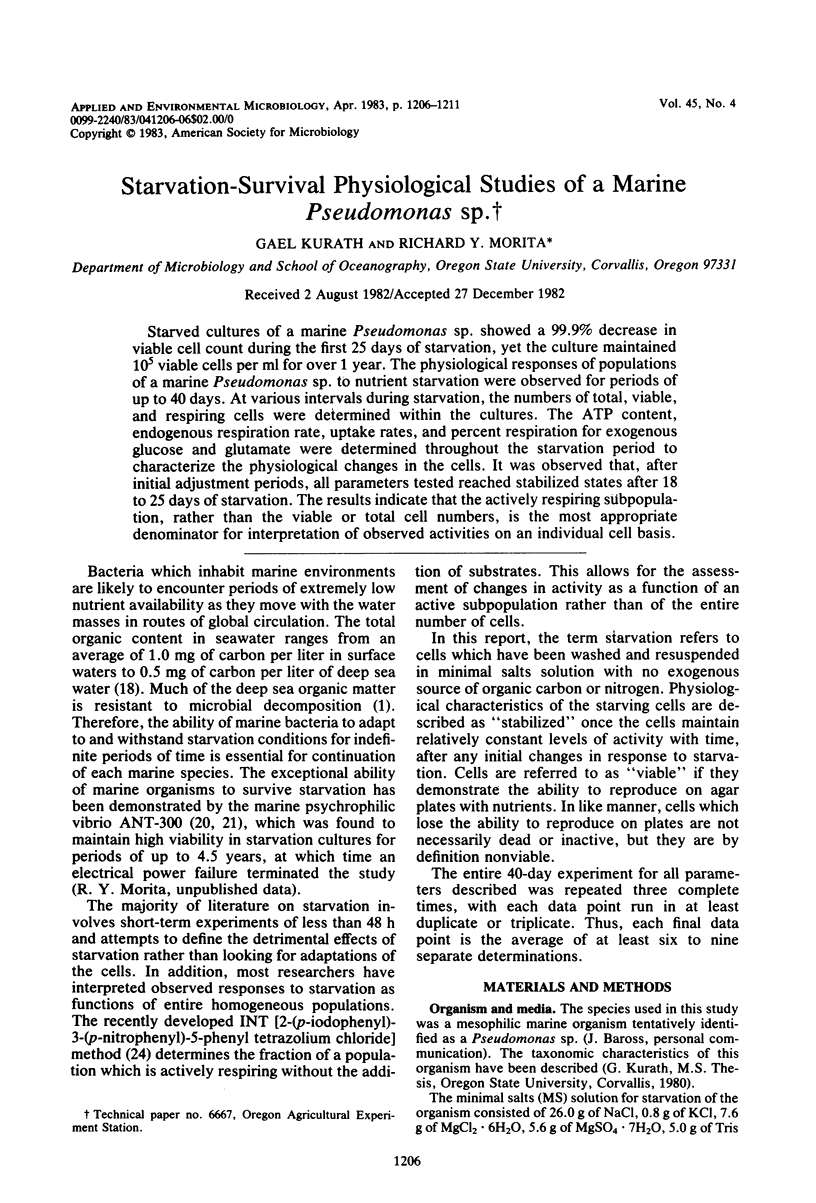
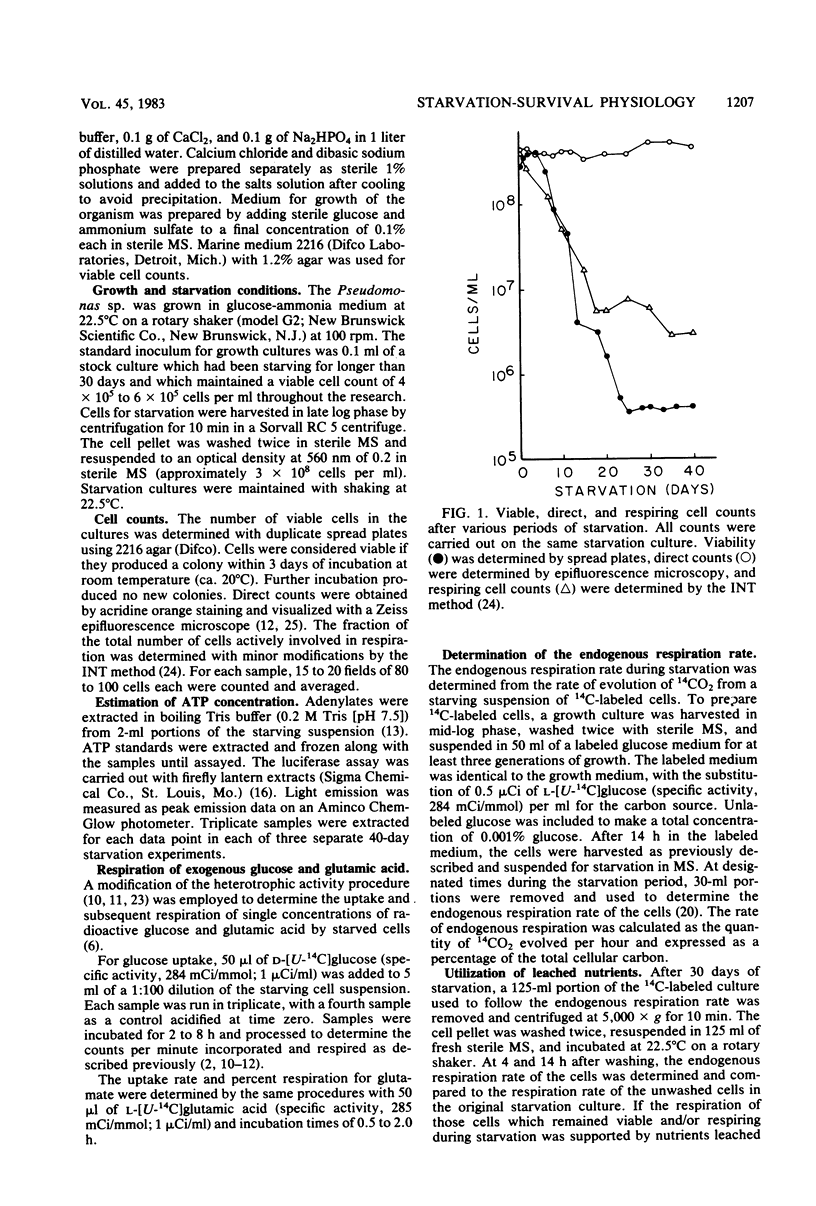
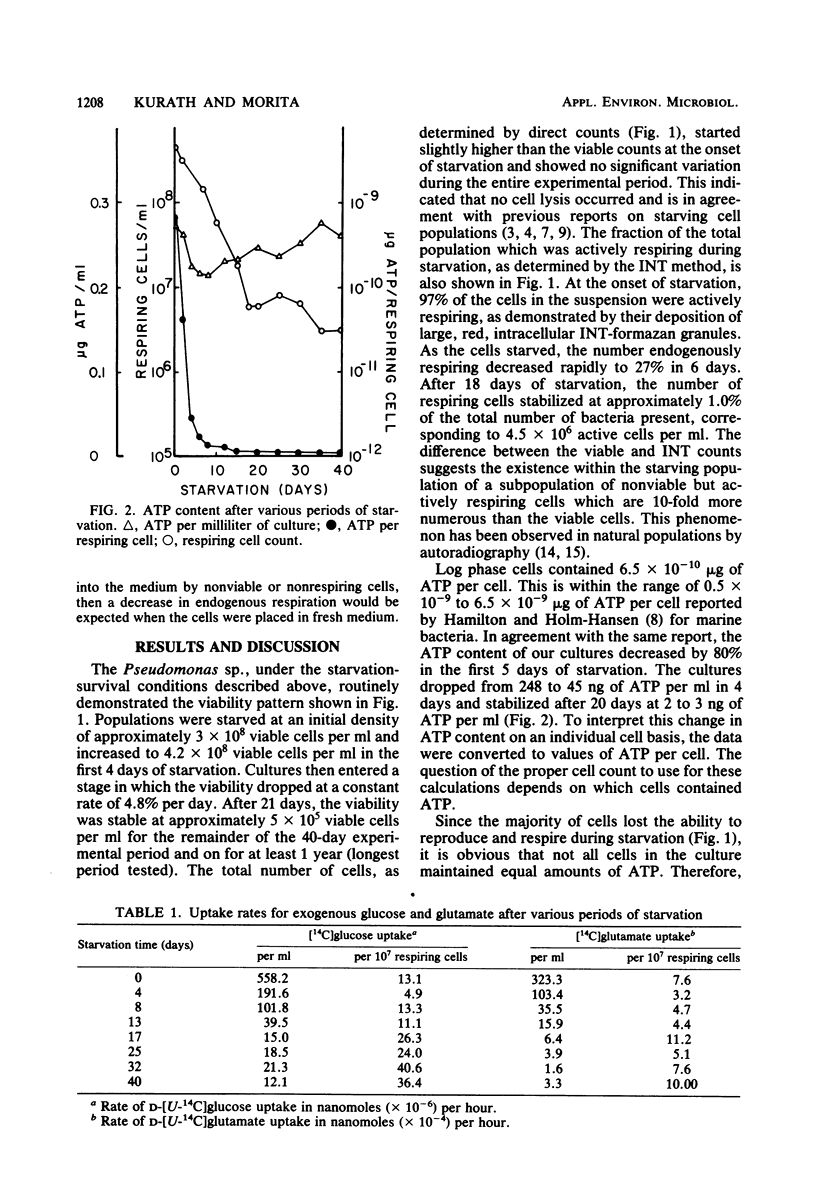
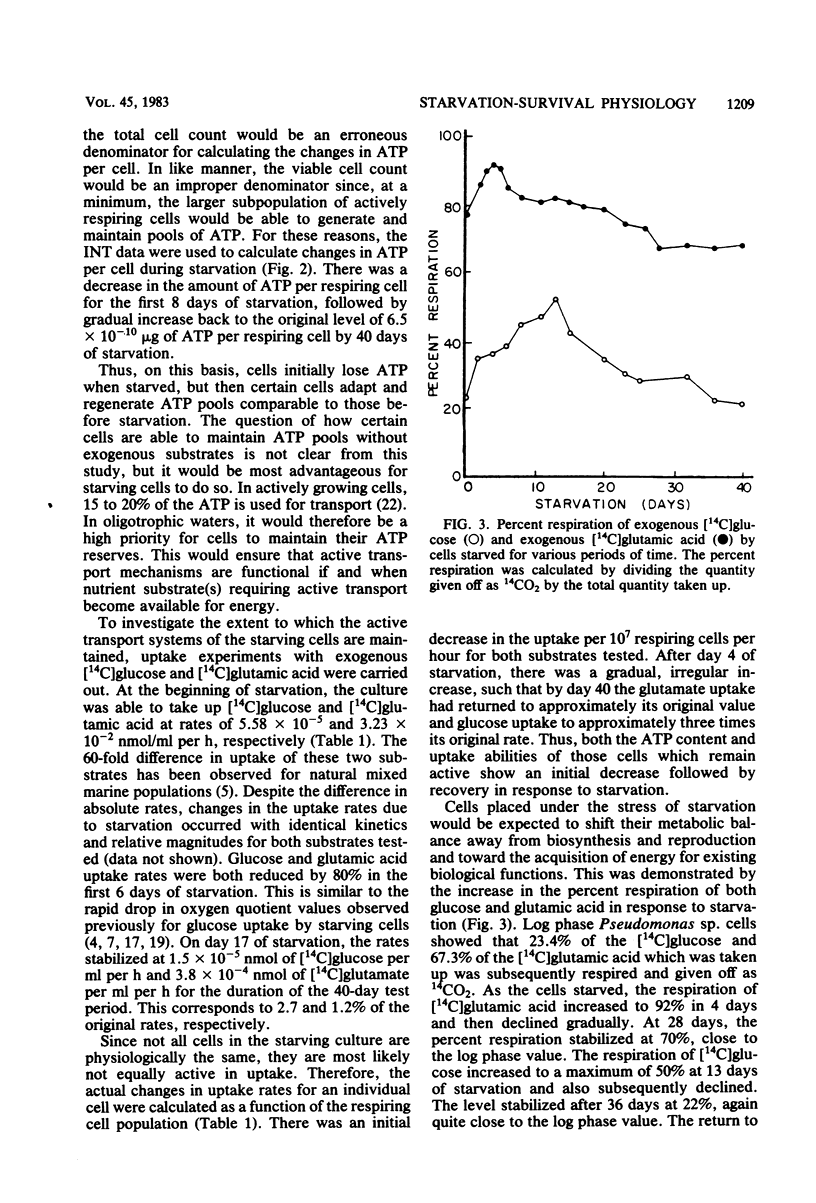
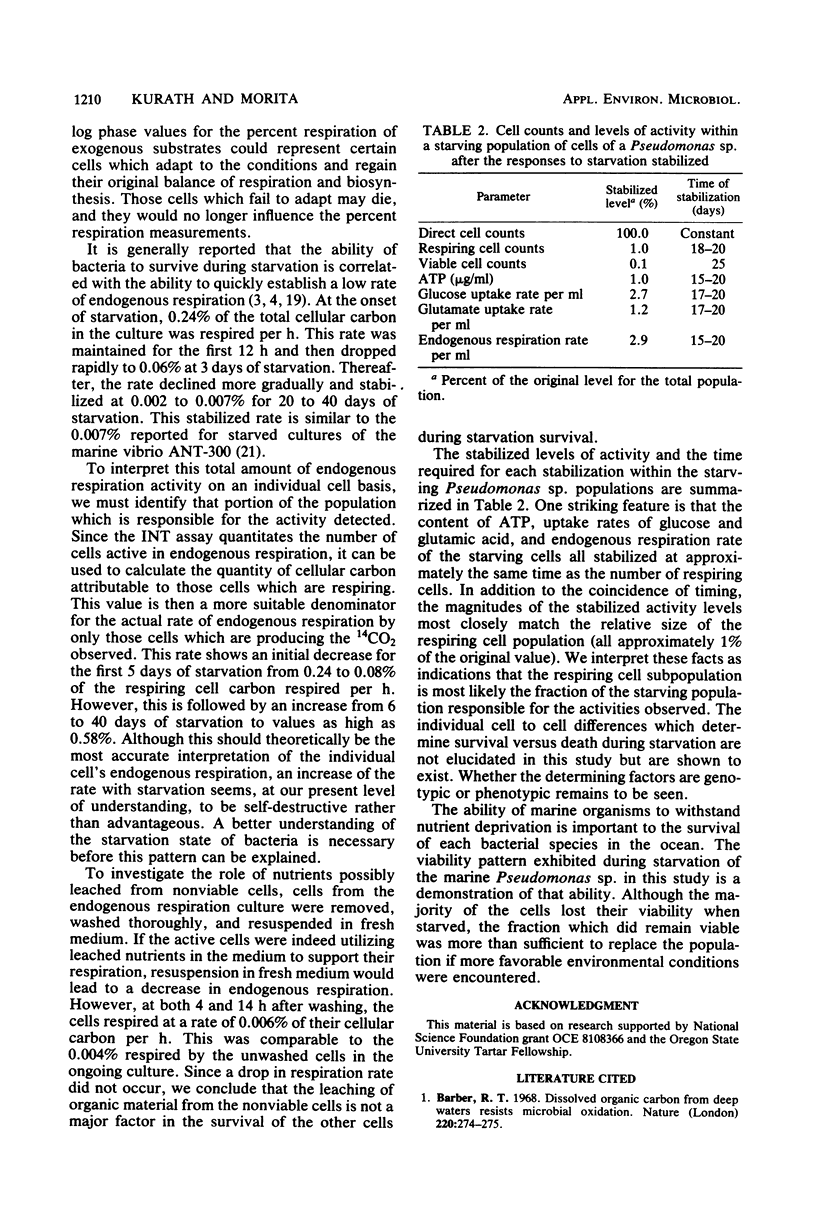
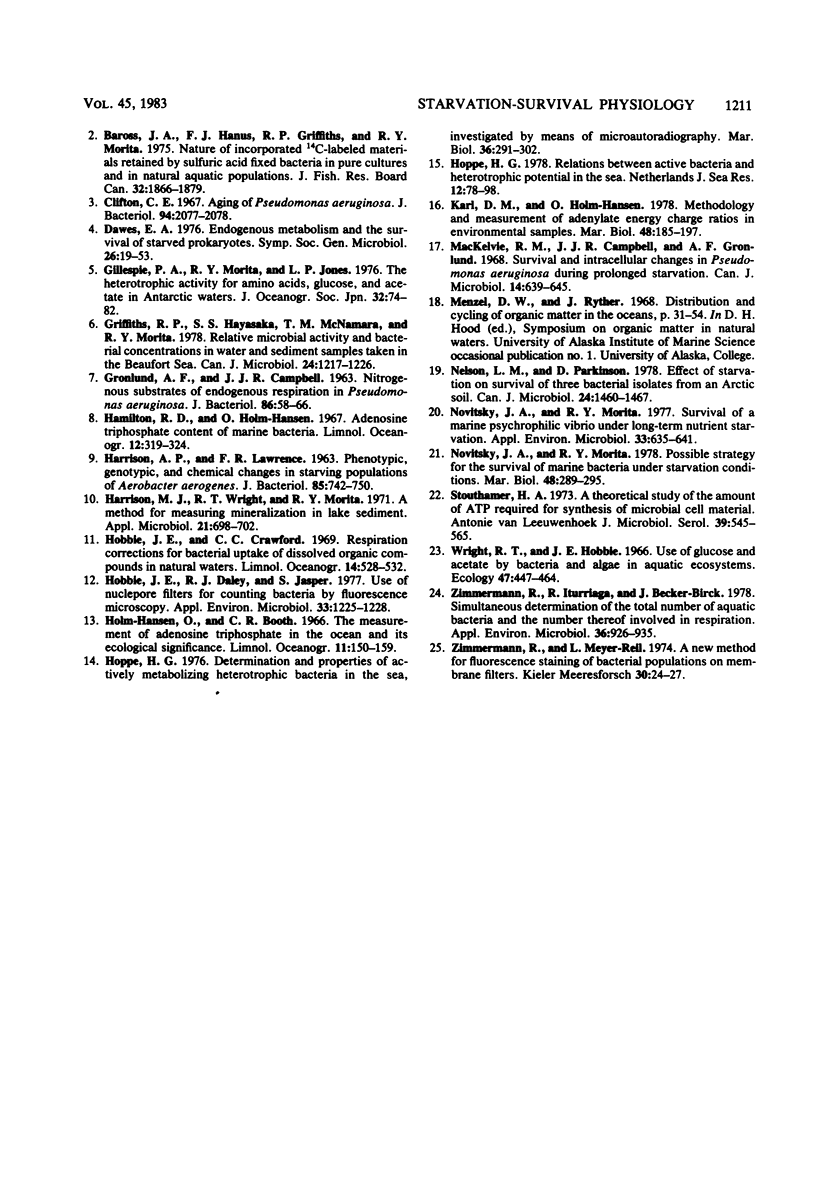
Selected References
These references are in PubMed. This may not be the complete list of references from this article.
- Barber R. T. Dissolved organic carbon from deep waters resists microbial oxidation. Nature. 1968 Oct 19;220(5164):274–275. doi: 10.1038/220274a0. [DOI] [PubMed] [Google Scholar]
- Clifton C. E. Aging of Pseudomonas aeruginosa. J Bacteriol. 1967 Dec;94(6):2077–2078. doi: 10.1128/jb.94.6.2077-2078.1967. [DOI] [PMC free article] [PubMed] [Google Scholar]
- GRONLUND A. F., CAMPBELL J. J. NITROGENOUS SUBSTRATES OF ENDOGENOUS RESPIRATION IN PSEUDOMONAS AERUGINOSA. J Bacteriol. 1963 Jul;86:58–66. doi: 10.1128/jb.86.1.58-66.1963. [DOI] [PMC free article] [PubMed] [Google Scholar]
- Griffiths R. P., Hayasaka S. S., McNamara T. M., Morita R. Y. Relative microbial activity and bacterial concentrations in water and sediment samples taken in the Beaufort Sea. Can J Microbiol. 1978 Oct;24(10):1217–1226. doi: 10.1139/m78-196. [DOI] [PubMed] [Google Scholar]
- HARRISON A. P., Jr, LAWRENCE F. R. PHENOTYPIC, GENOTYPIC, AND CHEMICAL CHANGES IN STARVING POPULATIONS OF AEROBACTER AEROGENES. J Bacteriol. 1963 Apr;85:742–750. doi: 10.1128/jb.85.4.742-750.1963. [DOI] [PMC free article] [PubMed] [Google Scholar]
- Harrison M. J., Wright R. T., Morita R. Y. Method for measuring mineralization in lake sediments. Appl Microbiol. 1971 Apr;21(4):698–702. doi: 10.1128/am.21.4.698-702.1971. [DOI] [PMC free article] [PubMed] [Google Scholar]
- Hobbie J. E., Daley R. J., Jasper S. Use of nuclepore filters for counting bacteria by fluorescence microscopy. Appl Environ Microbiol. 1977 May;33(5):1225–1228. doi: 10.1128/aem.33.5.1225-1228.1977. [DOI] [PMC free article] [PubMed] [Google Scholar]
- MacKelvie R. M., Campbell J. J., Gronlund A. F. Survival and intracellular changes of Pseudomonas aeruginosa during prolonged starvation. Can J Microbiol. 1968 Jun;14(6):639–645. doi: 10.1139/m68-107. [DOI] [PubMed] [Google Scholar]
- Nelson L. M., Parkinson D. Effect of starvation on survival of three bacterial isolates from an arctic soil. Can J Microbiol. 1978 Dec;24(12):1460–1467. doi: 10.1139/m78-235. [DOI] [PubMed] [Google Scholar]
- Novitsky J. A., Morita R. Y. Survival of a psychrophilic marine Vibrio under long-term nutrient starvation. Appl Environ Microbiol. 1977 Mar;33(3):635–641. doi: 10.1128/aem.33.3.635-641.1977. [DOI] [PMC free article] [PubMed] [Google Scholar]
- Stouthamer A. H. A theoretical study on the amount of ATP required for synthesis of microbial cell material. Antonie Van Leeuwenhoek. 1973;39(3):545–565. doi: 10.1007/BF02578899. [DOI] [PubMed] [Google Scholar]
- Zimmermann R., Iturriaga R., Becker-Birck J. Simultaneous determination of the total number of aquatic bacteria and the number thereof involved in respiration. Appl Environ Microbiol. 1978 Dec;36(6):926–935. doi: 10.1128/aem.36.6.926-935.1978. [DOI] [PMC free article] [PubMed] [Google Scholar]


